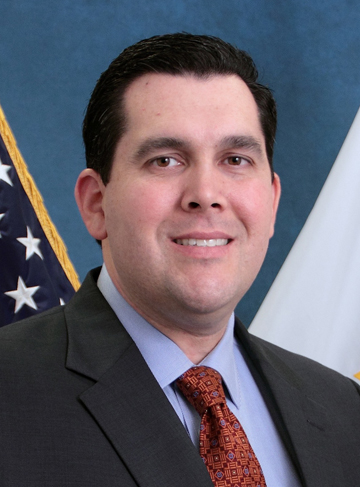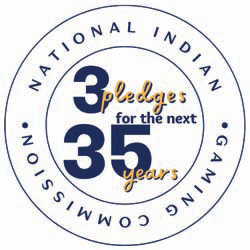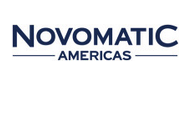
Thirty-five years ago on February 25, 1987, the Supreme Court of the United States affirmed tribal governments’ distinct authority over gaming on Indian land. Among the compelling interests considered in the court’s analysis were the shared tribal and federal interests in self-sufficient tribal communities and federal policies of tribal self-governance.
The court’s decision considered the important federal obligations created by the inherent tribal sovereignty at the core of tribal governments’ relationships to the U.S. The court’s decision also considered a tribe’s “strong incentive” to cultivate a sustainable economic enterprise.
The subsequent enactment of the Indian Gaming Regulatory Act (IGRA) in 1988 continued to recognize those governmental interests. While the act established the regulatory framework that governs Indian gaming today, IGRA’s overarching objectives continue to emphasize the need for strong tribal economies and the value of a tribe’s distinct regulatory capacity to protect those economies and the patrons who make those economies possible.
After 35 years of Indian gaming success, these governmental interests not only remain, they make Indian gaming unique when compared to other parts of the gaming industry. Today, Indian gaming represents more than 500 gaming enterprises licensed by over 240 tribal governments on Indian land in 29 states. Indian gaming is often the lifeblood to strengthen and revitalize necessary tribal programs and services. It continues to create opportunities for tribes to foster intergovernmental relationships across all jurisdictions in order to build diplomatic ties and regional economies. And Indian gaming continues to provide an effective means for a tribal government to execute the vision a tribal community has for protecting its institutions and values.
The regulatory community plays a critical role in supporting these interests. Planning for a healthy regulatory workforce is one of those roles.
The current focus of the National Indian Gaming Commission (NIGC), which promotes preparedness in the regulatory community, encourages all Indian gaming regulatory bodies to assess risk and anticipate opportunities. By including regulatory workforce needs in this assessment, regulators will help better support the industry’s next 35 years of Indian gaming.
The NIGC invites tribal gaming regulatory bodies to consider committing to the NIGC 3 for 35 Project. The commitment calls on Indian gaming regulatory bodies to prioritize conversations within their organizations and engage with other regulators, tribal lawmakers and operators to assess the following three aspects of Indian gaming’s regulatory workforce: Strategic Recruitment, Knowledge Retention, and Skills Planning.
Strategic Recruitment
Regulatory bodies benefit from a strategic approach to recruitment. A large but competitive regional workforce pool, the small workforce pools typically found in rurally located communities, and a tribe’s education and career goals for its citizens are some factors informing those strategies. Strategic recruitment can help reduce the threat to a regulatory body’s continuity of operations from an unstable workforce.
Knowledge Retention
Many regulatory programs are approaching 20-year and 30-year anniversaries. As valuable team members retire, a threat arises to the knowledge retention critical for meeting a regulatory body’s mission. Cross-training, internal policy reviews and data retention efforts are some of the measures organizations are using to mitigate the impact of losing key subject matter experts.
Skills Planning
Innovations require regulators to bolster and realign their regulatory expertise. Assessing the tools available in areas such as surveillance, cybersecurity, licensing and auditing as well as environment, public health and safety present an opportunity to evaluate how training and resources can most efficiently meet stated public policy objectives. The more precise a regulatory body’s approach to its skill development, the more it can prepare for new threats and emerging technologies.
Across Indian Country, discussions are already under way to prepare the future regulatory workforce. These conversations are leading to effective solutions as diverse as Indian gaming’s regulatory bodies. By highlighting the value of these conversations, the NIGC 3 for 35 Project is another effort to help reduce the risk of lapses in continuity of operations, as well as the impact of losing expertise and institutional knowledge. In addition, it addresses the need to readjust resources to regulate emerging innovation and to regulate with more efficiency.
As each tribal regulatory body assesses its regulatory workforce’s unique needs, please consider committing to the NIGC 3 for 35 Project and its goals as a tool to support that assessment.
 The NIGC 3 for 35 Project is a campaign to promote preparedness in the regulatory workforce. The project aims to bring attention to preparedness across the regulatory community while supporting a 35-year-old affirmation of governmental interests in tribal self-sufficiency and greater self-governance through Indian gaming. A commitment to assess and plan for the next generation of regulators will mitigate future risks to the regulatory mission. To learn more and follow the NIGC 3 for 35 Project, visit NIGC.gov.
The NIGC 3 for 35 Project is a campaign to promote preparedness in the regulatory workforce. The project aims to bring attention to preparedness across the regulatory community while supporting a 35-year-old affirmation of governmental interests in tribal self-sufficiency and greater self-governance through Indian gaming. A commitment to assess and plan for the next generation of regulators will mitigate future risks to the regulatory mission. To learn more and follow the NIGC 3 for 35 Project, visit NIGC.gov.


















